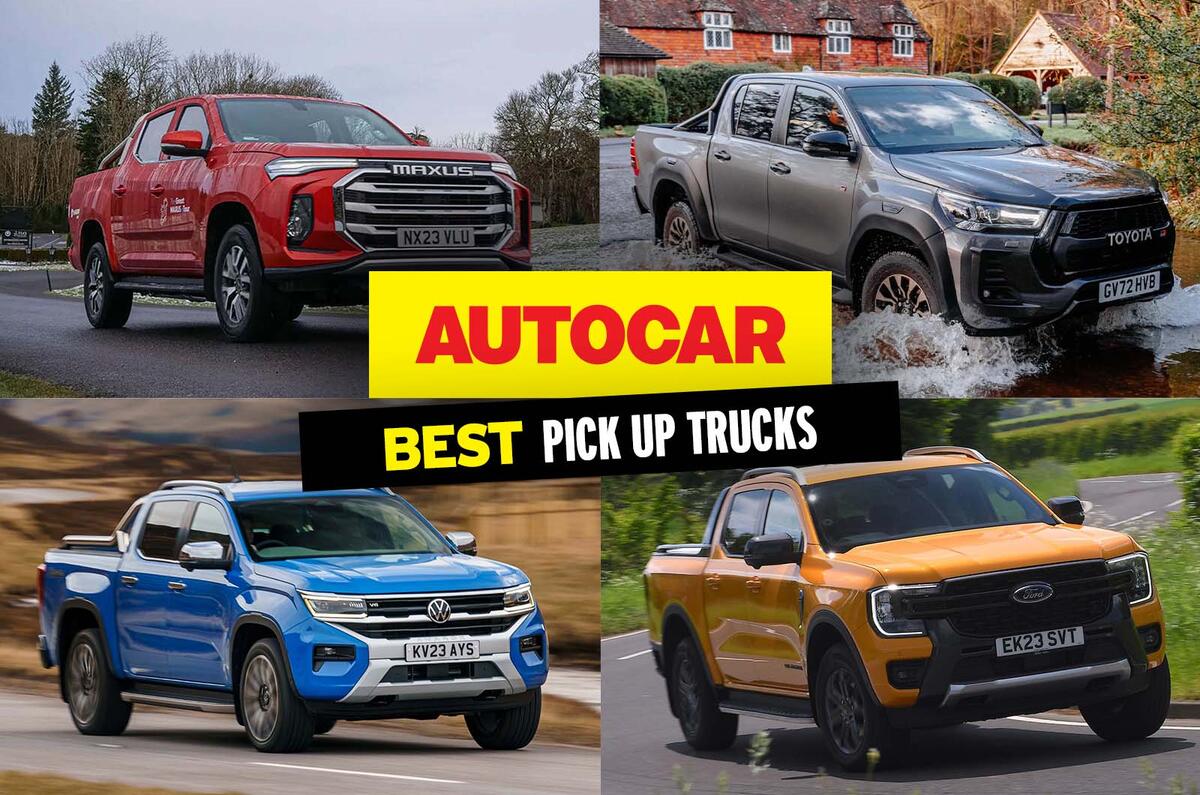The best pick-up trucks – driven, rated and ranked
With cargo space, versatility and luxury features, pick-up trucks have become great alternatives to cars
News


by Sam Phillips and Jack Warrick
7 mins read
16 April 2025
Share
Dependable, robust and versatile, the pick-up truck has grown into a far more desirable offering in recent years, to a point where regular folk are selecting a double-cab workhorse over an SUV.
Before the boom in popularity, pick-ups were purely utilitarian vehicles, but they have become increasingly more upmarket, with SUV-level comfort, refinement and technology to attract private buyers.
It has certainly worked, as evidenced by the number of double-cab pick-ups on UK roads these days.
Related articles
- Best hot hatches – driven, rated and ranked
- The best hybrid SUVs – PHEVs and regular hybrids rated
- The best estate cars – driven, rated and ranked
- The best hybrid cars: PHEVs and regular hybrids rated
- The best electric cars – driven, rated and ranked
Previously, the tax-busting benefits of double-cab pick-ups also heightened their appeal, but as of April 2025, they’re classed as cars rather than light commercial vehicles, meaning no more beneficial rates for benefit-in-kind tax.
So where does that leave us? Despite the tax changes, a pick-up still makes a lot of sense if you need a durable vehicle that can carry and tow just about anything.
Having tested all of the latest pick-ups on sale, our favourite is the Ford Ranger. It’s reasonably priced, has an upmarket interior full of intuitive technology and rides and handles like a large SUV.
But which other pick-ups should you consider? Keep reading as we share our list of the best models in 2025.
1. Ford Ranger
9
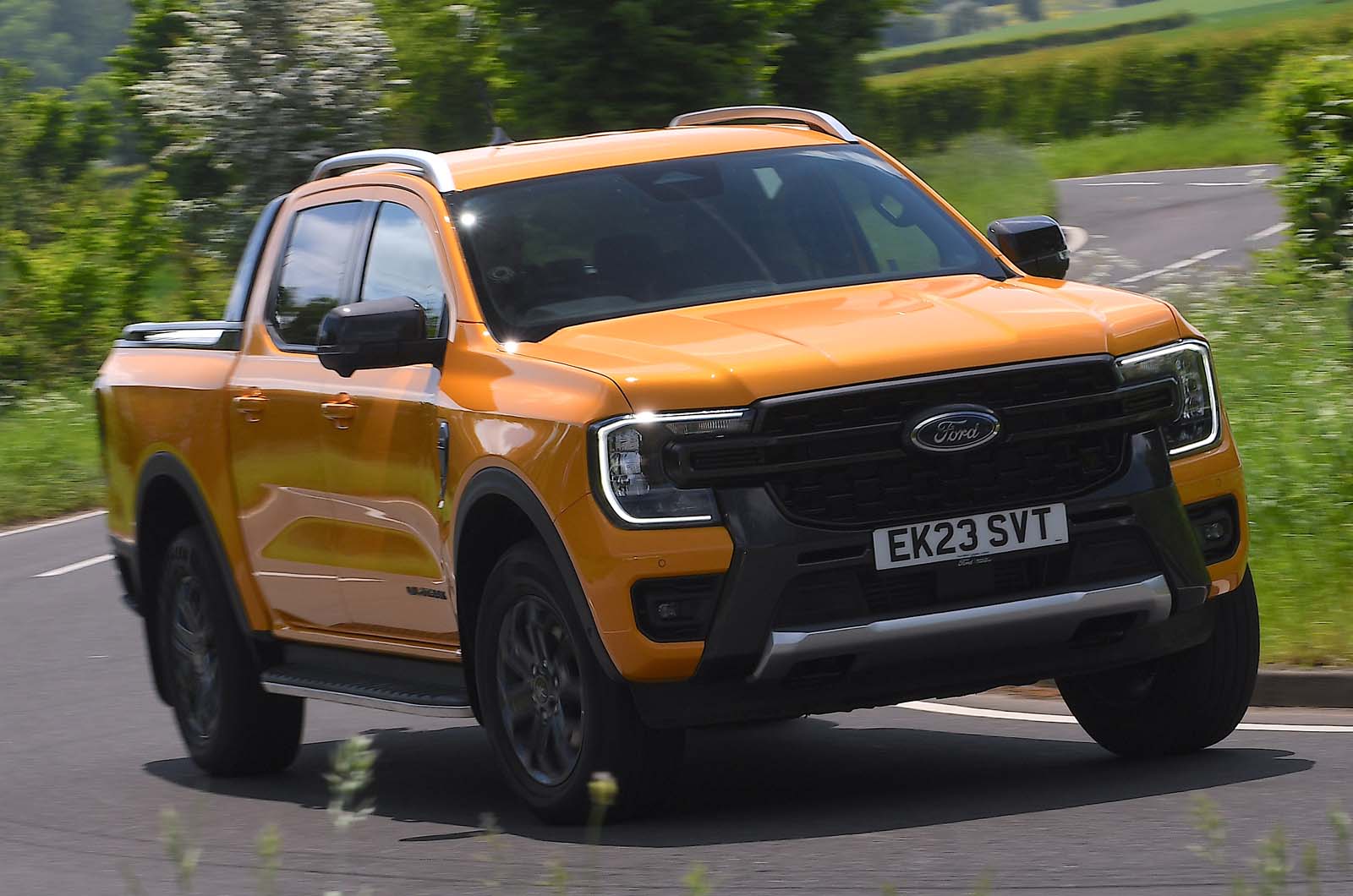
- Design9
- Interior8
- Performance8
- Ride & Handling8
- Costs8
Pros
SUV-like handling and refinement
Robust yet plush interior with usable technology
Thoughtful design takes inspiration from the F-150
Cons
Gruff engine
Fuel economy could be better
Single-cab tied to cheapest trim
Best for: Daily driving
The Ford Ranger is Britain’s most popular small truck, and it’s easy to see why: it absolutely nails the pick-up truck brief.
Ford has improved the Ranger in meaningful ways to reduce the number of compromises that come with a light commercial vehicle.
Compared with its predecessor, the Ranger made big leaps in desirability, taking visual inspiration from Ford’s iconic F-150, with a square-set and rugged design.
You can have a single- or double-cab model and it has a max payload of between 1035kg and 1207kg, depending on the model. The loadbed measures a competitive 1564mm in length.
The cabin is digital-savvy, with Ford’s latest portrait-orientated infotainment touchscreen, which is easy to use and intuitive, and the set of physical buttons underneath are handy when driving. Material quality is good too.
A broad mix of engines is available. You can have a 168bhp or 202bhp four-cylinder diesel or a 237bhp V6 turbo diesel, then there’s a new petrol plug-in hybrid powertrain with 277bhp and an all-electric range of 26 miles.
To drive, the Ranger feels more like an SUV than a pick-up: its leaf-sprung rear axle can make it feel a bit busy over lumps and bumps but overall it’s comfortable and steers precisely.
Read our Ford Ranger review
Save money on a new Ford Ranger with What Car?
Finance this car with Drivenfi
Latest Reviews

Alpine A390 prototype review

Tesla Model Y

Used Fiat Panda 2012-2024 review
8
Used Fiat Panda 2012-2024 review

Renault 5 review
9

BMW XM
6
Read our review
Car review

Ssangyong Musso
Practical pick-up truck looks good inside and out and has a refined engine and pleasingly direct steering, but its ride is in need of refinement
Back to top
2. Ford Ranger Raptor
8
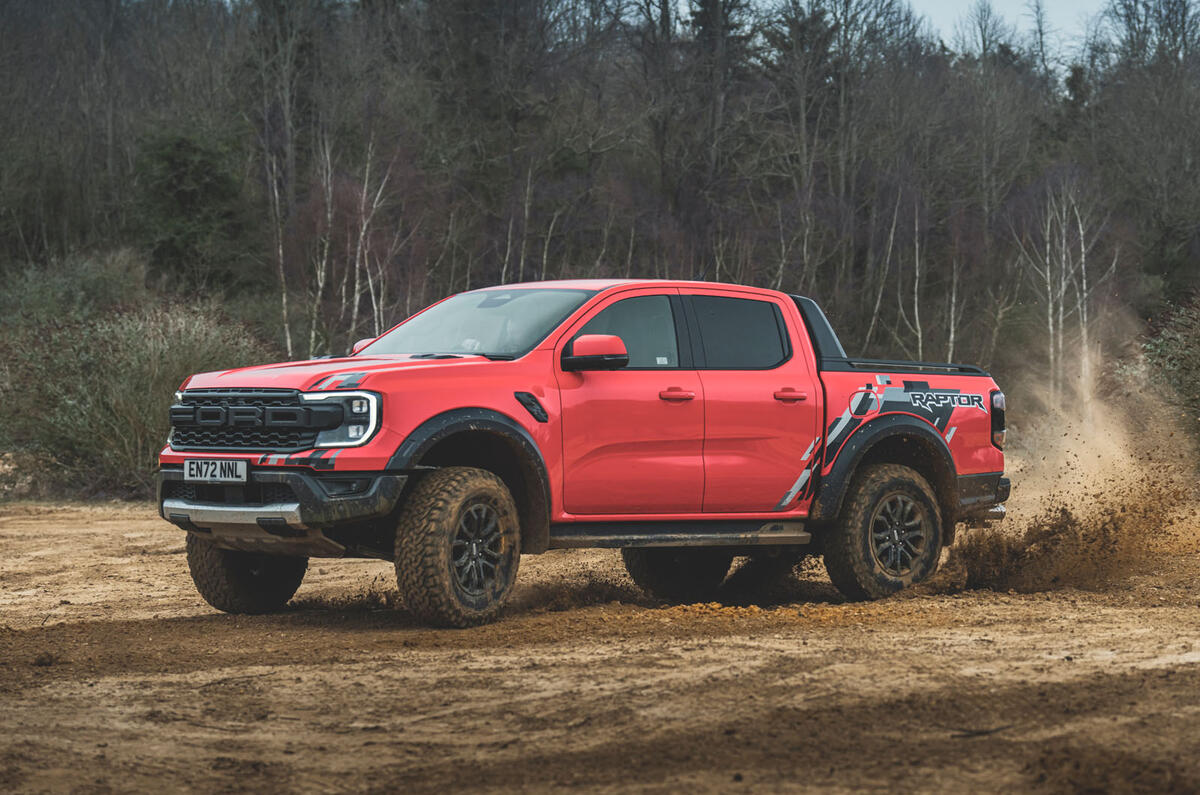
- Design8
- Interior8
- Performance8
- Ride & Handling8
- Costs7
Pros
Supreme off-road capability
Twin-turbo V6 has real character and sweet soundtrack
Logically configured cabin feels upmarket
Cons
Coil springs and load bed can limit hill-climbing capabilites
Not much room in the back of the cab
Payload is limited to 652kg
Best for: Power and performance
The most recent iteration of the Ford Ranger Raptor – a performance version of the Ranger – is a slightly more enticing proposition than the car it replaced.
For UK drivers especially, the Raptor is a niche proposition: it’s amazing in its element, but when it’s not, it doesn’t entertain like a great driver’s car really ought to.
It ditches the previous model’s 2.0-litre diesel engine for a more powerful 3.0-litre petrol V6, which pumps out 288bhp and 316lb ft, vastly improving the pick-up’s off-road capabilities.
This enhanced muscle provides enough punch to surprise a host of hatchbacks and saloons on the tarmac too, hitting 0-62mph in 7.9sec.
Once again, it’s Ford’s enhanced suspension that stands out most and sets it apart from many of the other pick-ups in this list. Its smart electronically controlled Fox ‘live-valve’ adaptive dampers effortlessly smooth out whatever terrain lies ahead.
The result? The Raptor is supple and controlled on the road, while in the rough stuff it can tackle ragged and torn terrain at speeds that would likely leave traditional 4x4s being swept into a carrier bag at the end of the route.
Read our Ford Ranger Raptor review
Read our Ford Ranger Raptor long-term test
Finance this car with Drivenfi
3. Ineos Grenadier Quartermaster
8
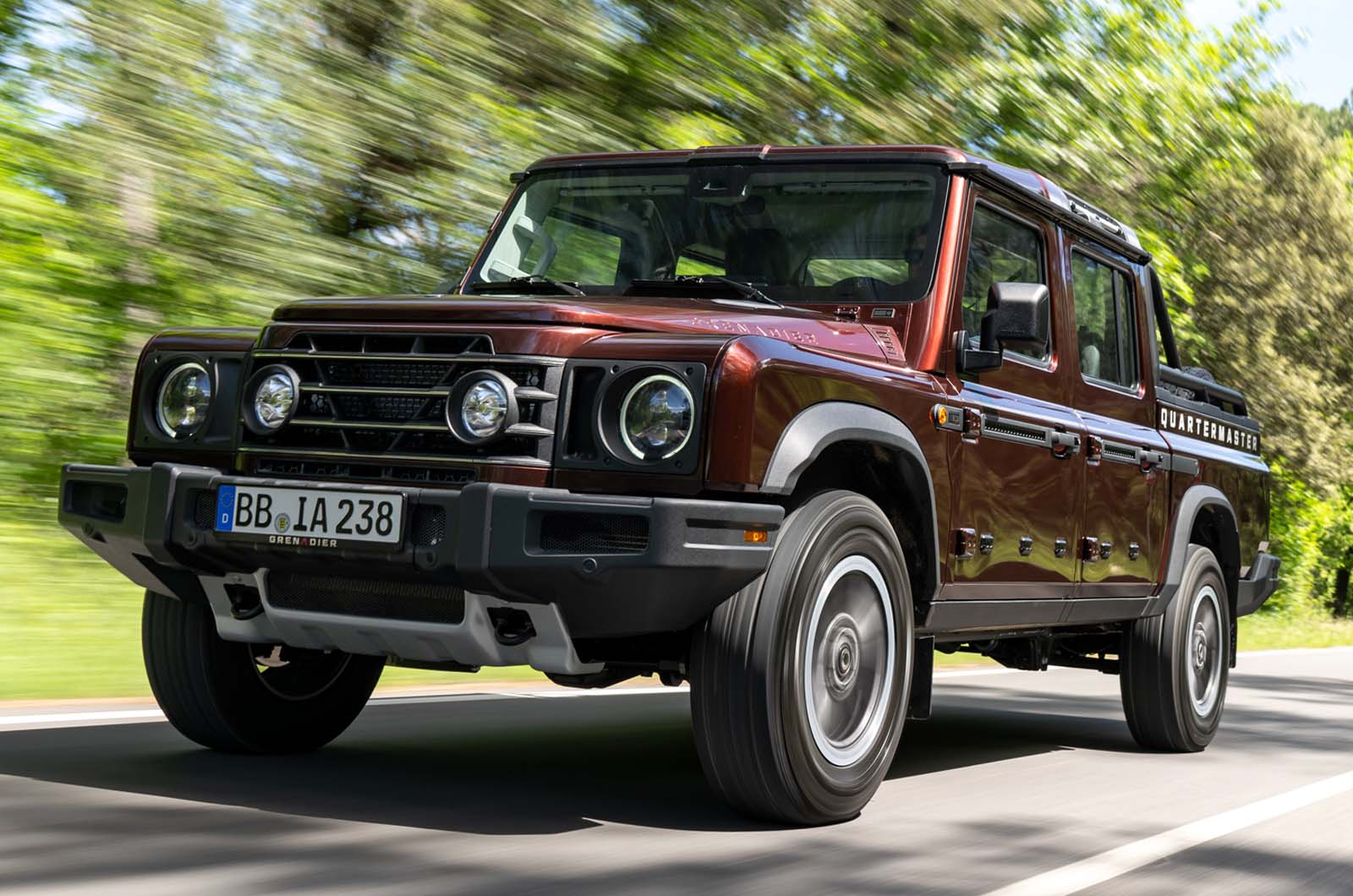
- Design8
- Interior8
- Performance7
- Ride & Handling8
- Costs7
Pros
Very good off-road
Solid, sturdy and endlessly practical
Characterful engines
Cons
Uncomfortable rear seats
More expensive than double-cab rivals
Load bay can carry only 835kg
Best for: Off-road ability
Priced from around £66,000, the Grenadier Quartermaster sits at the dearer end of the pick-up segment, being based on the Grenadier SUV.
By adding the versatility and utility of a pick-up bed, Ineos has given the Grenadier’s solid start in life an even broader appeal.
The Quartermaster is 305mm longer than the Station Wagon, giving it a load bay that measures 1564mm long and 1619mm wide – large enough for a Euro pallet.
That being said, the Quartermaster’s towing and payload capacities are more aligned with those of a five-seat 4×4 than a pick-up. Towing is rated to 3500kg, but it can carry only 835kg in the load bay.
You have a choice of two BMW-sourced 3.0-litre engines, petrol or diesel. Both are mated to an eight-speed automotive gearbox that drives all four wheels permanently. The engines are smooth, responsive and full of character.
Off road, the Quartermaster is extremely capable, with excellent ground clearance and wading capabilities.
Its ladder-frame chassis makes it feel a little more old-school on the road, but it’s composed enough for the class.
Read our Ineos Grenadier Quartermaster review
Save money on a new Ineos Grenadier Quartermaster
Finance this car with Drivenfi
Back to top
4. Toyota Hilux
7
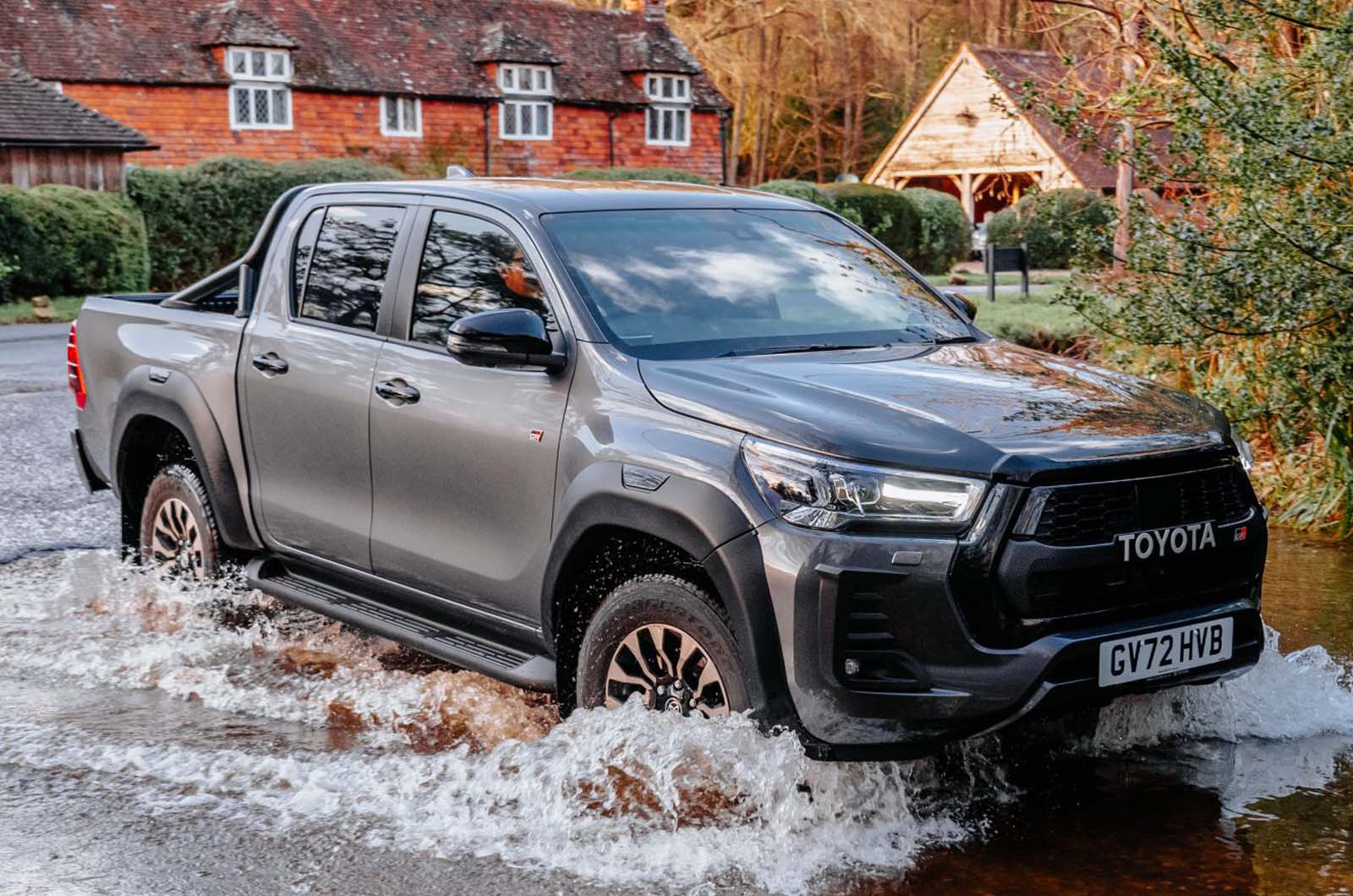
- Design7
- Interior6
- Performance7
- Ride & Handling5
- Costs9
Pros
Just as useful and tough as any previous Hilux
Reasonably priced and discreetly styled
Decent off-road ability
Cons
On-road ride is poor
Could be quicker
Doesn’t offer Baja-exile damping like the Ford Ranger Raptor
Best for: Reliability
The Hilux is a long-standing member of the Toyota stable and has garnered a reputation for being versatile, dependable and reliable – and it’s the only pick-up that has really challenged the Ranger for European sales.
It’s hard to argue with the unburstable capability of a vehicle such as this.
Regardless of trim, the Hilux is comfortable and well-appointed inside. It rides and handles with some level of sophistication, too, but it can’t match the Ranger for touring comfort and body control. There’s plenty of wind and road noise as well.
You can have the Hilux with a 148bhp 2.4-litre or 201bhp 2.8-litre four-cylinder diesel engine.
Cargo carriers will be pleased to know that the Hilux has a better carrying capacity than most of its rivals and, as with the Ranger, you can choose between single- and double-cab bodystyles. There’s also an extended cab, or Extra Cab, as Toyota calls it.
The Hilux can tow up to 3500kg and carry a payload of up to 1000kg. It’s loadbed is slightly shorter than the Ranger’s, at 1555mm.
Read our Toyota Hilux review
Save money on a new Toyota Hilux with What Car?
Finance this car with Drivenfi
5. Volkswagen Amarok
7
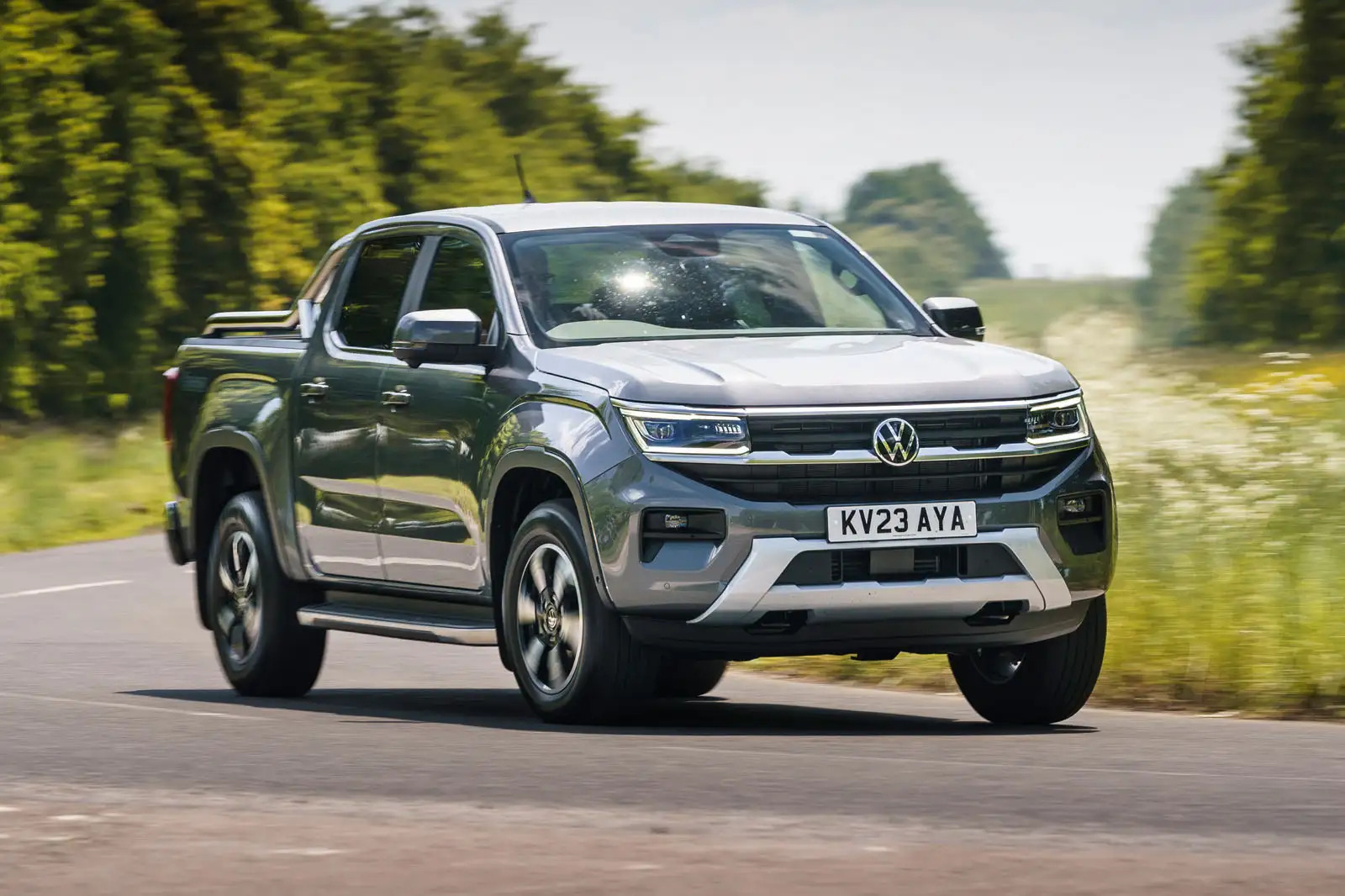
- Design8
- Interior8
- Performance7
- Ride & Handling7
- Costs8
Pros
Mainstream trucks don’t get much more desirable than this
Plush, well-finished cabin
Refined to drive and sit in
Cons
Dearer than the closely related Ford Ranger
Fussy ride
Limited ground clearance
Best for: Refinement
The original Volkswagen Amarok kick-started the craze for lifestyle pick-ups, combining the tough utilitarian qualities of a truck with the interior and exterior finish of an upmarket car.
All in, this Ford-hearted Amarok is an objectively superior device to its predecessor.
Popular as it was, the Amarok failed to drum up the funds for Volkswagen’s accountants to sign off on development of a second-generation model, which is why the current version borrows the majority of its parts from the Ford Ranger.
At present, there’s a choice of three diesels: there are two four-cylinder engines, with 168bhp and 202bhp, and a 227bhp 3.0-litre V6 that’s mated to Ford’s 10-speed automatic gearbox and permanent four-wheel drive.
The Amarok is a well-sorted pick-up. It steers neatly and precisely and Volkswagen has brought its influence with strong levels of refinement and comfort – although the leaf-sprung arrangement carried over from the Ranger means it can struggle to deal with rougher roads, betraying its commercial roots.
Iffy ride aside, you can carry a maximum payload of up to 1130kg. Inside, the Amarok shares its architecture with the Ranger, but it has been draped in materials from Wolfsburg to give it an upmarket and premium feel.
It’s well equipped, too, with the central touchscreen complemented by plenty of physical buttons, and overall it feels more like an SUV than a pick-up.
Read our Volkswagen Amarok review
Sve money on a Volkswagen Amarok with What Car?
Finance this car with Drivenfi
Back to top
6. Isuzu D-Max
6
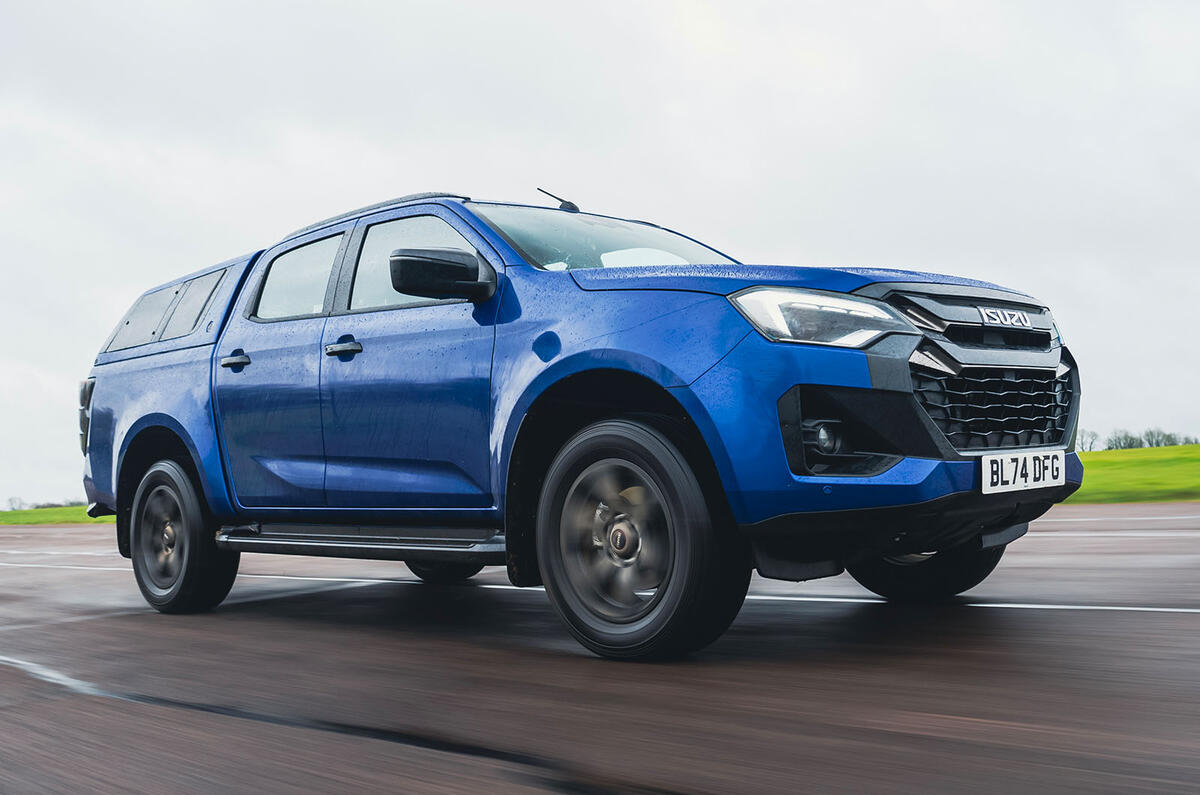
- Design6
- Interior6
- Performance5
- Ride & Handling5
- Costs6
Pros
Feels as robust as it looks
Cheaper list price than rivals
Five-year/125,000-mile warranty
Cons
Unrefined diesel engine
Outdated infotainment system
Poor ride and handling
Best for: Durability
The Isuzu D-Max has been a quiet mainstay of the pick-up truck segment for many years and remains a solid choice for those after a cheaper, more utilitarian offering.
The D-Max has all of its key selling points – ruggedness, durability and usability – well covered and should maintain its reputation as a highly rated, value-for-money workhorse.
The D-Max comes in a variety of configurations, from the bare-bones workhorse Utility through more lifestyle-oriented versions with decent standard kit to the Arctic Trucks model, which gets raised suspension, knobbly tyres and a mean-looking bodykit for a Ford Ranger Raptor-like aesthetic.
Again, single-cab, extended-cab (which can be had in posher trims, unlike with rivals) and double-cab versions are all available.
Because it rides on a ladder-frame chassis, the D-Max is tailored towards off-road driving, hence it’s less well-mannered in its on-road ride and handling than some of its rivals.
Power is drawn from a 1.9-litre four-cylinder engine, which sounds gruff and doesn’t have much punch – just 162bhp. So the D-Max is pretty staid, even for a truck, with the 0-62mph spring taking 13sec, whether you have the six-speed automatic or six-speed manual gearbox.
That being said, it’s still one of the cheapest pick-ups you can buy, undercutting the Hilux.
Read our Isuzu D-Max review
Save money on a new Isuzu D-Max with What Car?
Finance this car with Drivenfi
7. KGM Musso
6
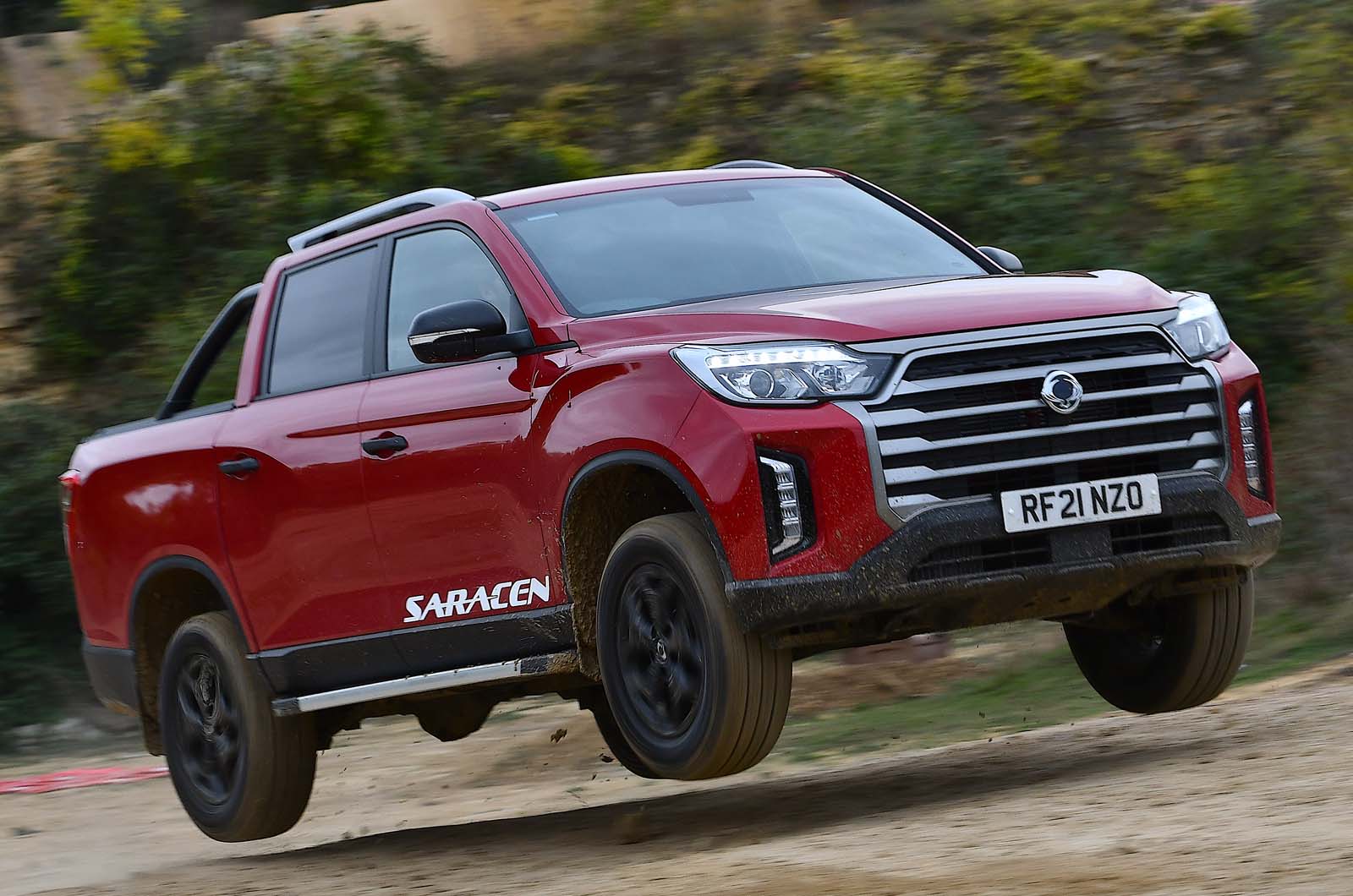
- Design6
- Interior6
- Performance6
- Ride & Handling6
- Costs8
Pros
Good cabin space
Flexbile load bed
Affordable
Cons
Rough ride
Few luxury features
Short load bay
Best for: Value
If you’re after a slightly left-field pickup, the KGM Musso (formerly the Ssangyong Musso) is a sensible and affordable alternative.
The Musso has an engine up there with the best in class for refinement.
Overall, the Musso delivers respectable performance and handling, with its pick-up credentials bolstered by a decent towing capacity and solid utility.
Power is drawn from a 199bhp 2.2-litre diesel engine (standard fit across all variants) that offers more grunt than most of its rivals.
Opt for the entry-level manual and braked towing capacity is 3200kg, rising to 3500kg for the six-speed automatic.
Depending on the trim, the Musso can carry a payload of between 1095kg and 1205kg.
It corners with decent grip and body control, and while the ride comfort is a little mixed, the engine is torquey yet quiet when cruising.
It’s looks are a little peculiar in standard form, with a short load bay, but it does offer four seats big enough for adults. If you need a full-length bed, you will have to opt for the range-topping Saracen.
Read our KGM Musso review
Save money on a new KGM Musso with What Car?
Finance this car with Drivenfi
Back to top
8. Maxus T90EV
5
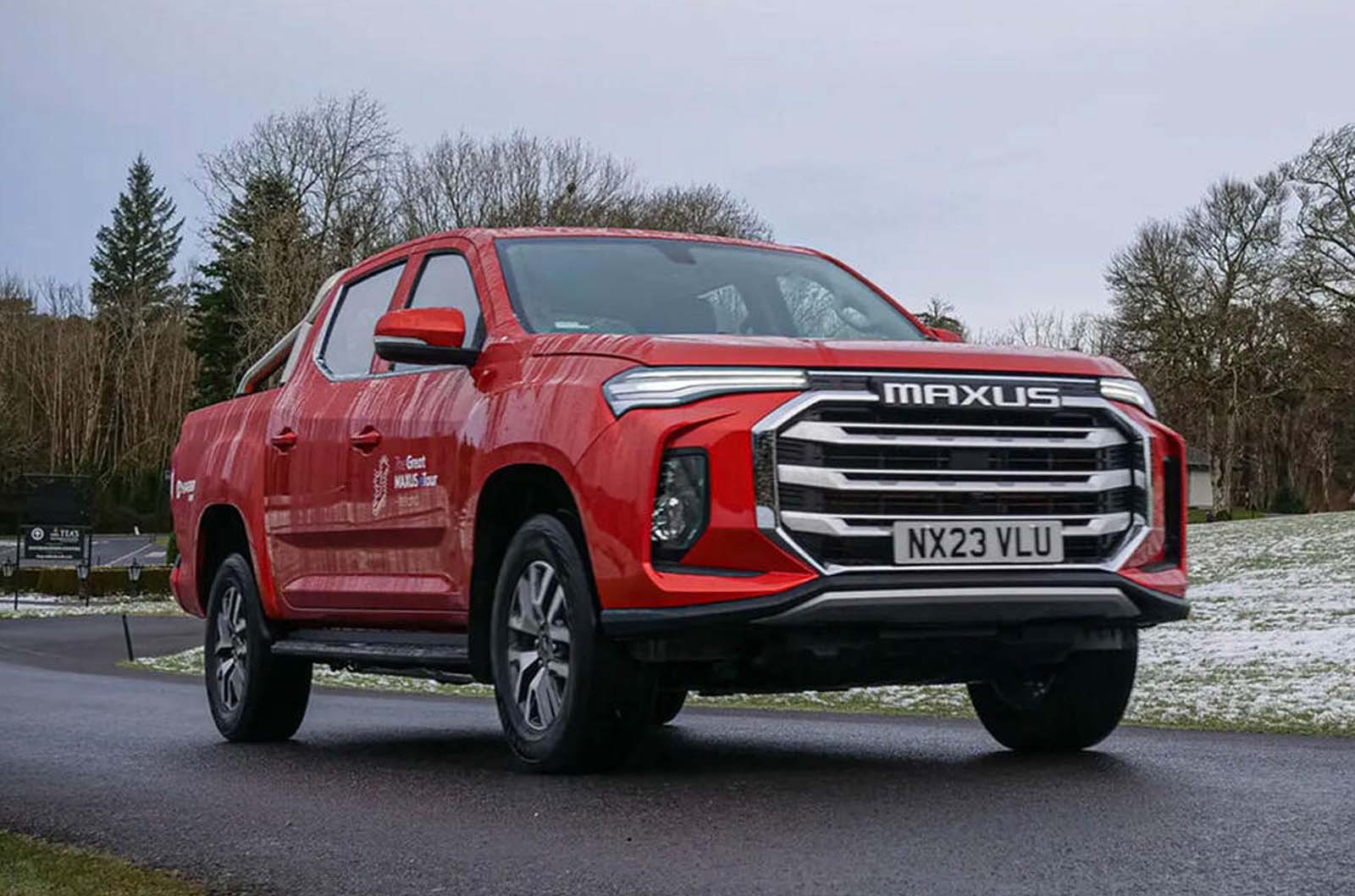
- Design6
- Interior6
- Performance6
- Ride & Handling5
- Costs6
Pros
The only electric pick-up you can buy in the UK
It doesn’t cost a fortune
Has a 1000kg payload
Cons
Not desirable or upmarket
Restless ride
Poor handling
Best for: Electric motoring
There’s only one fully electric pick-up available in the UK: the Maxus T90EV.
Although usable, functional and tolerable enough, if it has a place, it’s as a tax-saving working tool – and nobody will likely warm to it more than the business owner whose money it’s saving.
Built by Chinese giant (and MG owner) SAIC, it’s a mid-sized truck that’s available through a UK dealer network of 60 outlets and costs from just under £50,000, excluding VAT.
The T90EV is powered by a 201bhp electric motor that delivers more than enough power, acceleration and drivability.
However, its ride and handling are rougher than the pick-up class norm, the ride particularly so.
Inside, the T90EV is well configured and the ergonomic layout is pretty comfortable, with easy-to-use secondary controls and clear instrumentation.
Real-world range is roughly 200 miles or a little less when driven exclusively on the motorway.



